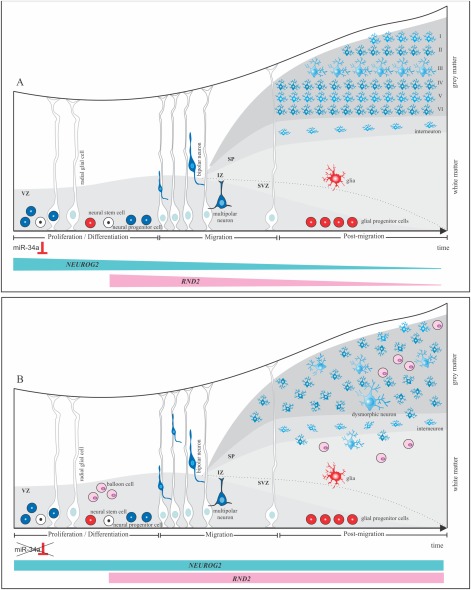Figure 5.

Schematic representation of hypothetical molecular mechanisms involved in failure of cell fate specification and disruption of neuronal migration in focal cortical dysplasia (FCD) type II. (A) Stages of normal cortical development: proliferation of neuroglial precursors, neuron migration, and postmigration. Differentiation of neuroglial precursors in the proliferation stage is potentially regulated by miR‐34a, which inhibits expression of NEUROG2. Thereafter, RND2, whose expression is controlled by NEUROG2, is downregulated and successive waves of newborn neurons undergo sequential steps of radial migration, along radial glial cells, leading to the organization of cortical layers. (B) Model proposed with formation of aberrant cells, such as dysmorphic neurons and balloon cells in FCD type II. Disruption in the interaction between miR‐34a and NEUROG2 leads to an upregulation in the expression of NEUROG2 and RND2. Overexpression of NEUROG2 affects the inhibition of neurogenesis, leading to the formation of undifferentiated cells, such as balloon cells. In addition, dysregulation of RND2 expression could impair the cytoskeleton modulation, resulting in heterotopic and/or dysmorphic neurons and cortical dyslamination due to failure in the organization and orientation of radially migrating neurons. IZ: intermediate zone; SP: subplate; SVZ: subventricular zone and VZ: ventricular zone.
